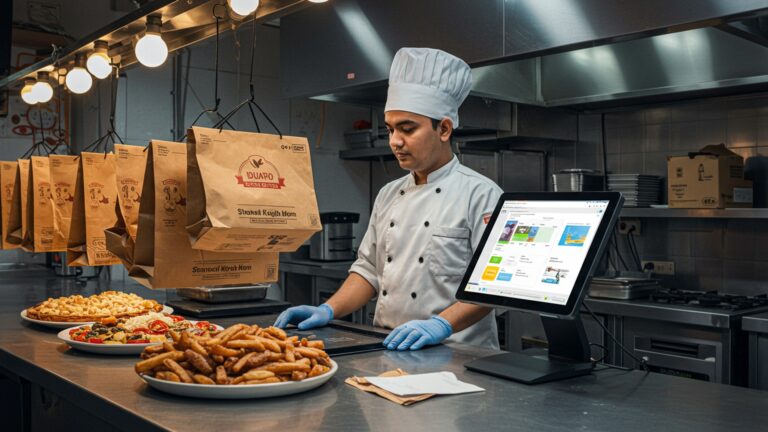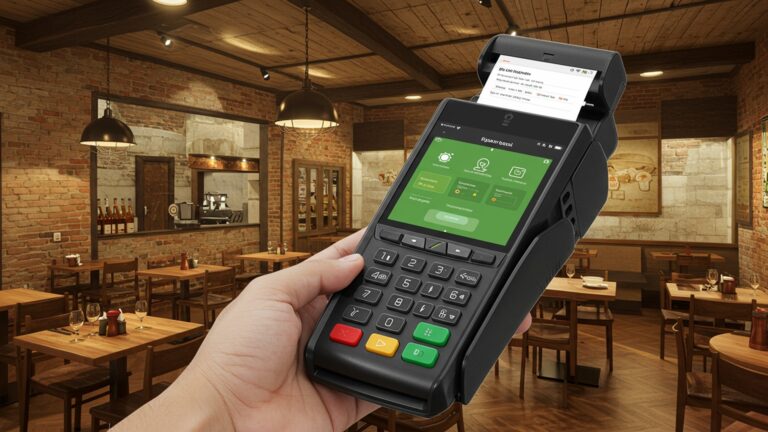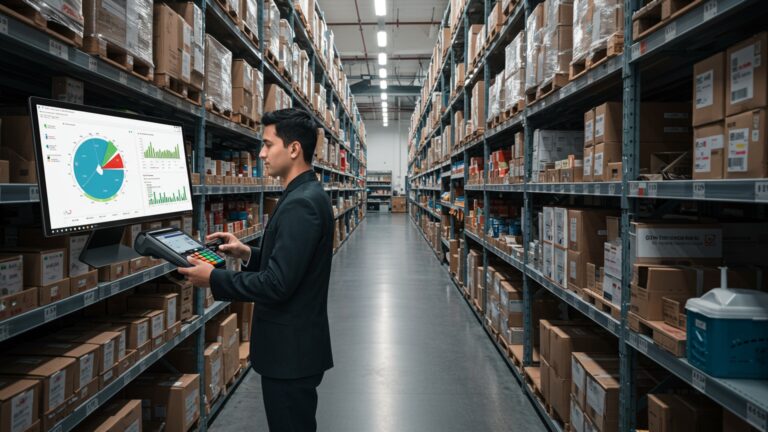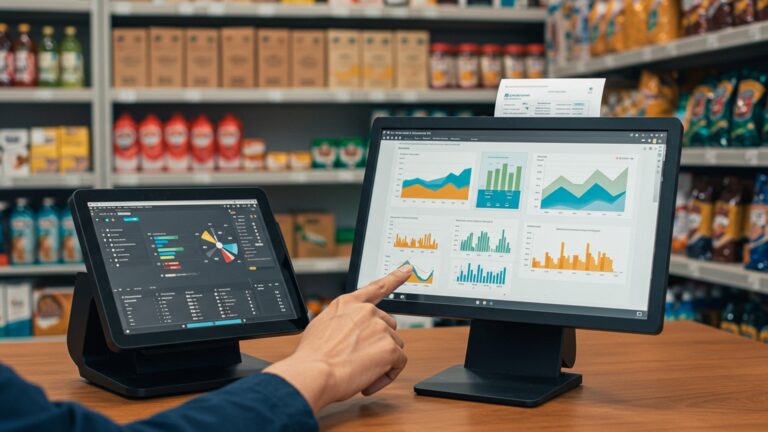How to Choose and Implement Android POS for Restaurants in India Effectively
The dynamic Indian restaurant landscape, from bustling QSRs to elegant fine-dining establishments, increasingly demands agile operational tools that transcend basic billing. Traditional POS systems often falter under the complexities of managing diverse payment gateways like UPI, integrating seamlessly with food aggregators such as Swiggy and Zomato, or providing real-time inventory insights. This operational crucible highlights why a sophisticated Android POS for restaurants India is becoming indispensable, not merely an option. Modern Android solutions offer unparalleled flexibility and mobility, leveraging cloud-based platforms to empower businesses with critical data analytics for menu optimization and staffing, while enhancing the customer experience through faster service and personalized engagement. They streamline everything from table management to loyalty programs, ensuring efficient, data-driven decision-making in a hyper-competitive market.
Written by PromotoAI
promotoai generate content that ranks 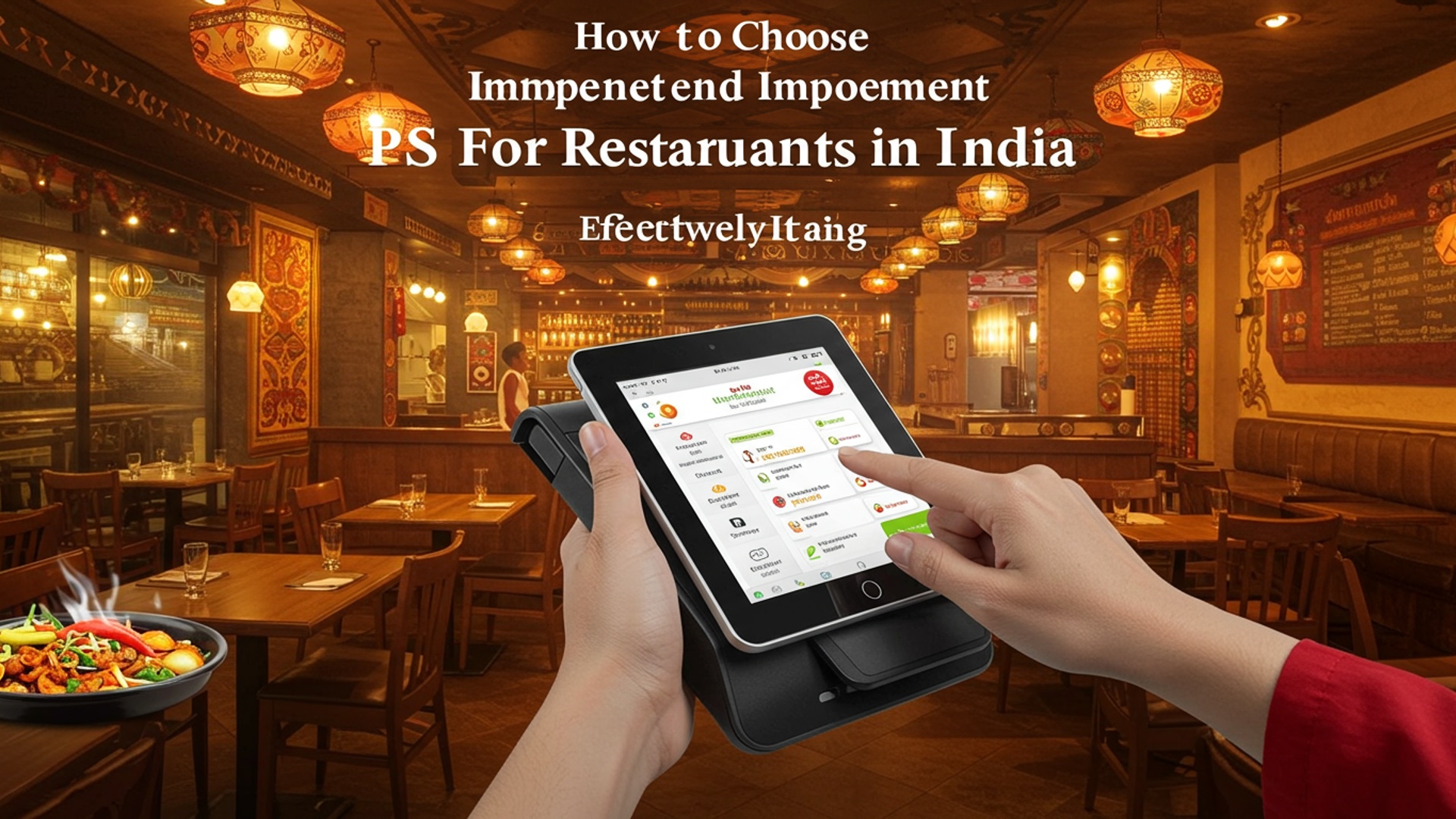
Understanding Android POS for the Indian Restaurant Landscape
In the vibrant and ever-evolving culinary scene of India, efficiency and customer experience are paramount. A Point-of-Sale (POS) system is no longer just a billing tool; it’s the central nervous system of a restaurant. Among the various options available, Android POS systems have emerged as a powerful, flexible. cost-effective solution, particularly for the diverse needs of Indian eateries, from bustling street food stalls to fine-dining establishments.
An Android POS system is essentially a software application running on Android-powered hardware (like tablets, smartphones, or dedicated POS terminals) that handles all aspects of a restaurant’s sales operations. This includes order taking, billing, payment processing, inventory management, customer relationship management (CRM). detailed reporting. Unlike traditional legacy POS systems that often require expensive proprietary hardware, Android POS leverages the widespread Android ecosystem, making it inherently more accessible and adaptable.
Why Android POS is Ideal for Restaurants in India
The specific challenges and opportunities within the Indian restaurant market make Android POS a compelling choice. Here’s why:
- Cost-Effectiveness
- Familiarity and Ease of Use
- Flexibility and Mobility
- Robust Offline Capabilities
- Scalability
- Integration Ecosystem
Android devices are generally more affordable than their iOS or Windows counterparts. This significantly reduces the initial investment for restaurants, a crucial factor for startups and small to medium-sized businesses in India.
With Android being the dominant mobile operating system in India, most staff members are already familiar with its interface. This drastically shortens the learning curve and reduces training time, leading to faster adoption and fewer operational errors.
Android POS systems can run on various form factors – from compact handheld devices for tableside ordering to larger tablets for billing counters. This mobility is invaluable in busy Indian restaurants, allowing servers to take orders accurately and efficiently, reducing wait times. improving service.
Many Android POS solutions offer strong offline modes, ensuring that operations continue smoothly even during internet outages, a common concern in certain regions of India. Data syncs automatically once connectivity is restored.
Whether you’re a single-outlet cafe or planning to expand into multiple branches, Android POS solutions are typically highly scalable. Adding new terminals or integrating new features is often straightforward and less costly.
The open nature of Android allows for easier integration with other third-party applications crucial for Indian restaurants, such as popular online food delivery platforms (Swiggy, Zomato), digital payment gateways (Paytm, Google Pay, UPI). loyalty programs.
Key Features to Prioritize When Choosing Your Android POS
Selecting the right Android POS for restaurants India requires a careful evaluation of features that align with your specific operational needs. Here are the critical functionalities to look for:
- Order Management & KOT System
- Inventory Management
- Billing & Payment Processing
- Customer Relationship Management (CRM)
- Reporting & Analytics
- Multi-Outlet Management
- Online Ordering Integration
- Employee Management
Efficiently manage orders, customize items, apply discounts. send Kitchen Order Tickets (KOTs) directly to the kitchen display system (KDS) or printer. Look for options that handle split orders and table management seamlessly.
Track raw materials and finished goods in real-time. This helps prevent wastage, manage stock levels. automate reordering, which is vital for controlling food costs in India’s fluctuating supply chain.
Support for various payment methods, including cash, cards, UPI, mobile wallets. integrated online payment gateways. The system should also handle GST compliance and generate professional invoices.
Build a customer database, track preferences, offer loyalty programs. manage feedback. This helps in personalizing service and driving repeat business, a significant aspect of Indian hospitality.
Comprehensive reports on sales, inventory, staff performance. peak hours. Actionable insights from these reports are crucial for making data-driven decisions about menu engineering, staffing. promotions.
If you operate multiple branches, the POS should offer centralized management for menus, pricing, inventory. reporting across all locations.
Seamless integration with your website’s online ordering system and popular food delivery aggregators is non-negotiable in today’s digital-first market.
Track staff attendance, manage shifts. monitor individual sales performance.
Comparing Android POS Vendors: What to Consider
When evaluating different Android POS for restaurants India, consider more than just the feature list. The vendor’s reliability and support are equally crucial. Here’s a comparison framework:
| Factor | Key Considerations | Why it Matters for Indian Restaurants |
|---|---|---|
| Pricing Model | Subscription-based (monthly/annual), one-time purchase, hardware bundles. | Budget constraints are common. comprehend total cost of ownership (TCO) including hardware, software. support fees. |
| Customer Support | 24/7 availability, local language support, remote assistance, on-site visits. | Timely support is crucial for operational continuity. Local support in regional languages is a huge plus. |
| Customization & Scalability | Ability to tailor features, add modules, integrate with other systems, handle growth. | Indian restaurants often have unique workflows. The system must adapt to your specific needs and grow with you. |
| Hardware Compatibility | Supports a range of Android devices, printers, cash drawers, barcode scanners. | Flexibility to use existing hardware or choose cost-effective options. |
| Security & Data Backup | Data encryption, user access controls, regular cloud backups. | Protecting sensitive customer and business data is paramount. Ensures business continuity. |
| Reputation & Reviews | Industry standing, testimonials, case studies, online reviews. | Learn from others’ experiences. A reputable vendor offers peace of mind. |
Always ask for a live demo and, if possible, a free trial. Speak to other restaurant owners who use the system. This provides invaluable insight into real-world performance and support quality.
Implementing Your Android POS System: A Step-by-Step Guide
Effective implementation is key to maximizing the benefits of your new Android POS for restaurants India. Follow these steps:
- Hardware Setup
- Choose Devices
- Peripherals
- Network Configuration
- Software Installation & Configuration
- Install the Android POS application from the Google Play Store or directly from the vendor.
- Configure menu items, pricing, modifiers. categories. This is a critical step; ensure all dishes, beverages. combos are accurately entered.
- Set up tax rates (GST), discounts. service charges.
- Define user roles and permissions for different staff members (e. g. , manager, cashier, server).
- Data Migration
- If you’re transitioning from an older system, carefully migrate existing customer data, inventory records. sales history.
- For new restaurants, accurately input initial inventory counts and supplier details.
- Staff Training
- Conduct comprehensive training sessions for all staff members who will be using the system: servers, cashiers, kitchen staff. managers.
- Focus on practical scenarios: taking orders, applying discounts, handling returns, processing various payment types. generating basic reports.
- Provide a user-friendly manual or quick reference guide.
- Pilot & Go-Live
- Before a full launch, run a pilot phase during off-peak hours. Identify and troubleshoot any issues.
- Once confident, transition to full operation. Have vendor support on standby during the initial days.
Decide between dedicated POS terminals, tablets (e. g. , Samsung Galaxy Tab, Lenovo Tab), or rugged handheld devices.
Install receipt printers (thermal printers are common), cash drawers, barcode scanners (if applicable). Kitchen Display Systems (KDS) or KOT printers.
Ensure robust Wi-Fi connectivity throughout your premises. Consider a backup internet connection.
“When ‘The Spice Route Cafe’ in Bangalore switched to an Android POS, their order accuracy improved by 20% within the first month. Their servers, already familiar with Android tablets, picked up the system incredibly fast. The integrated KOT system drastically reduced kitchen errors and ticket times, leading to happier customers and a smoother workflow,” shares their operations manager, Rajesh Kumar.
Best Practices for Maximizing Your Android POS Investment
Implementing an Android POS for restaurants India is just the beginning. To truly leverage its potential, adhere to these best practices:
- Regular Software Updates
- Data Security & Backups
- Continuous Staff Training
- Leverage Analytics
- Integrate Wisely
- Maintain Hardware
- Gather Feedback
Keep your POS software updated to benefit from new features, security enhancements. bug fixes. Most Android POS apps will have automatic update options.
Implement strong passwords, restrict access based on roles. ensure regular cloud backups of your data. This protects against data loss and unauthorized access.
As your menu evolves or new features are introduced, provide ongoing training to ensure staff are always proficient. Cross-train staff to cover different roles.
Regularly review the reports generated by your POS. Use insights into popular dishes, peak hours. staff performance to refine your operations, marketing. menu.
Connect your POS with other essential platforms like online food delivery aggregators, accounting software. loyalty programs to create a unified ecosystem.
Keep your Android devices and peripherals clean and well-maintained. Ensure chargers are readily available. batteries are healthy for mobile devices.
Encourage staff and even customers to provide feedback on the POS system. Their input can highlight areas for improvement or feature requests.
By carefully choosing and diligently implementing an Android POS system, Indian restaurants can significantly enhance operational efficiency, improve customer satisfaction. drive sustainable growth in a competitive market.
Written by PromotoAI
promotoai generate content that ranks
Conclusion
Choosing the right Android POS for your Indian restaurant isn’t merely a software selection; it’s a strategic investment in your establishment’s future. Remember, the goal is not just to digitize. to truly optimize operations, from seamless order management to integrated payment solutions like UPI. My personal advice is to look beyond features alone and focus on vendor support – a responsive, India-centric team can make all the difference when troubleshooting arises. A well-implemented system will integrate crucial modern elements like QR code ordering and efficient delivery partner management, mirroring the dynamic trends of our vibrant F&B landscape. Embrace this digital evolution, as the right Android POS system, much like exploring insights in our guide on restaurant POS software in India, empowers your staff, delights your customers. ultimately fuels your restaurant’s growth in an increasingly competitive market. Your journey towards operational excellence starts now; make this choice a stepping stone to unparalleled success.
More Articles
Discover the Top 7 Android POS Software Solutions for Your Business Needs
Learn How to Implement POS Software for Cloud Kitchen Success in India
7 Best POS Software Options to Boost Your Business Efficiency
5 Essential Features Your POS Billing Software Needs for GST Compliance
Learn 8 Smart Ways POS Software Streamlines Inventory Management
Written by PromotoAI
promotoai generate content that ranks
FAQs
Why should my restaurant in India even consider an Android POS system?
An Android POS can really streamline your operations. Think faster order taking, quicker billing, better inventory tracking for less food waste. insights into your sales. Plus, Android devices are generally more affordable and user-friendly, making them a great fit for the Indian market where cost-efficiency and ease of use are key. It helps you manage everything from table orders to online deliveries more efficiently, ultimately improving customer satisfaction and your bottom line.
Alright, I’m thinking about it. What are the absolute must-have features I should look for when choosing an Android POS for my restaurant?
You’ll definitely want features like robust order management (for dine-in, takeaway, delivery), KOT (Kitchen Order Ticket) generation, integrated billing with GST compliance, real-time inventory management, table management. integration with popular online food delivery platforms. Don’t forget multiple payment options (cash, card, UPI), customer relationship management (CRM) features. comprehensive reporting and analytics to help you make smart business decisions. An offline mode for patchy internet is also a lifesaver.
Are there any unique challenges or specific things Indian restaurants should keep in mind when picking an Android POS?
Absolutely. Indian restaurants often deal with diverse menus requiring highly customizable KOTs, a high volume of UPI transactions. sometimes fluctuating internet connectivity in different locations. Ensure the POS supports local payment gateways, handles GST calculations accurately, offers multi-language support if needed. has strong offline capabilities. Also, look for a vendor with good local support who understands the nuances of the Indian F&B market.
What’s the typical cost range for an Android POS system in India. what drives the price?
The cost can vary quite a bit. You’re typically looking at a subscription-based model, which might range from ₹1,500 to ₹5,000+ per month, depending on the features, number of terminals. vendor. Hardware costs (tablets, printers, cash drawers) are usually separate. Factors like advanced features (e. g. , loyalty programs, extensive reporting), multi-outlet support, premium customer service. custom integrations will push the price higher. Always clarify what’s included in the monthly fee.
Okay, I’ve picked a system. What’s the best way to get it up and running without causing chaos during peak hours?
The key is a phased and planned approach. Start by migrating your menu data and existing customer insights (if any). Set up your hardware (tablets, printers). Then, conduct thorough staff training during non-peak hours – hands-on practice is crucial. Begin with a ‘soft launch’ or test run during a slower period, allowing staff to get comfortable and identify any glitches. Finally, go live. ensure the vendor’s support team is readily available for the first few days.
My staff aren’t exactly tech wizards. How do I make sure they actually use this new POS effectively?
Training, training, training! Don’t just show them once. Provide multiple, interactive training sessions focusing on practical scenarios they’ll encounter daily. Keep the training simple, breaking down complex tasks into smaller steps. Designate a ‘super-user’ among your staff who can act as a go-to person for basic questions. Ensure the POS interface is intuitive and user-friendly. Ongoing support and refresher courses can also make a huge difference in adoption.
What about ongoing support and updates? Is that something I should worry about after implementation?
Absolutely, it’s crucial! Look for a vendor that offers reliable and responsive after-sales support, ideally with multiple channels like phone, chat, or email. Regular software updates are vital for bug fixes, security enhancements. new feature additions, especially with evolving regulations like GST. A good support system ensures your operations run smoothly and your investment stays relevant over time.



